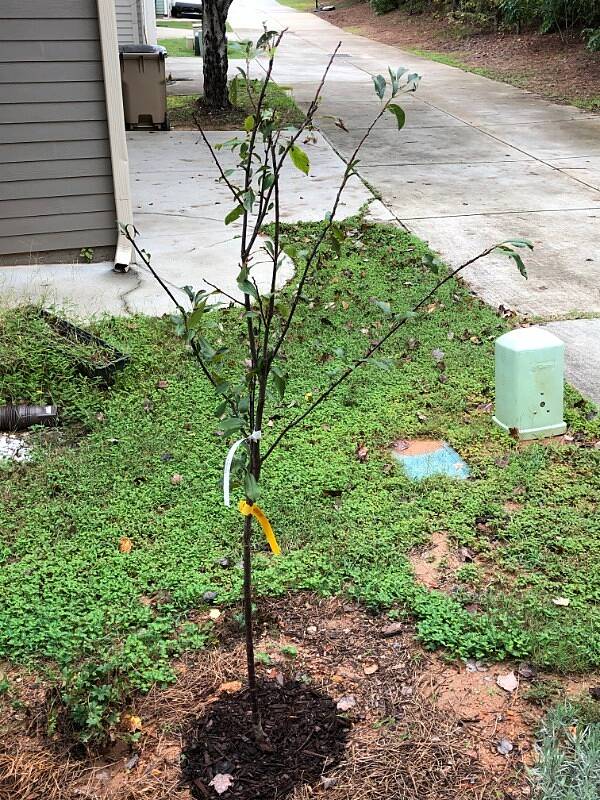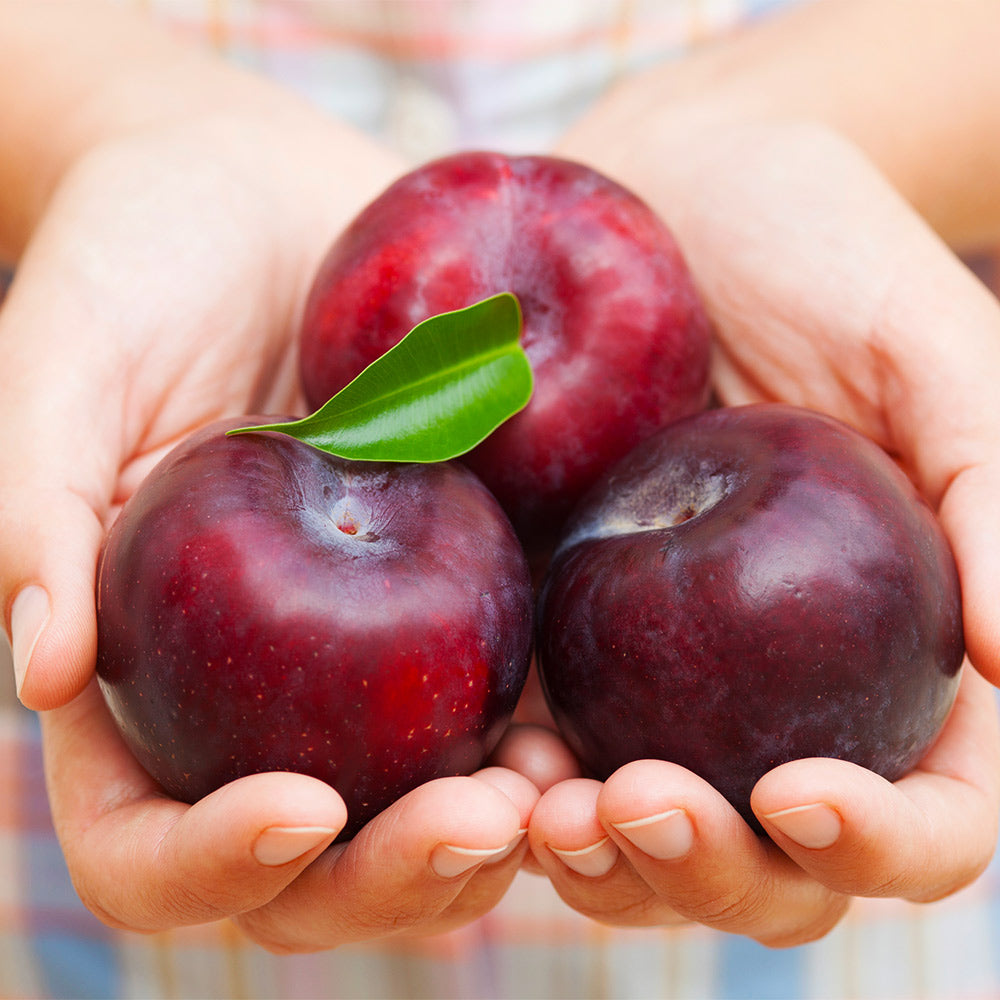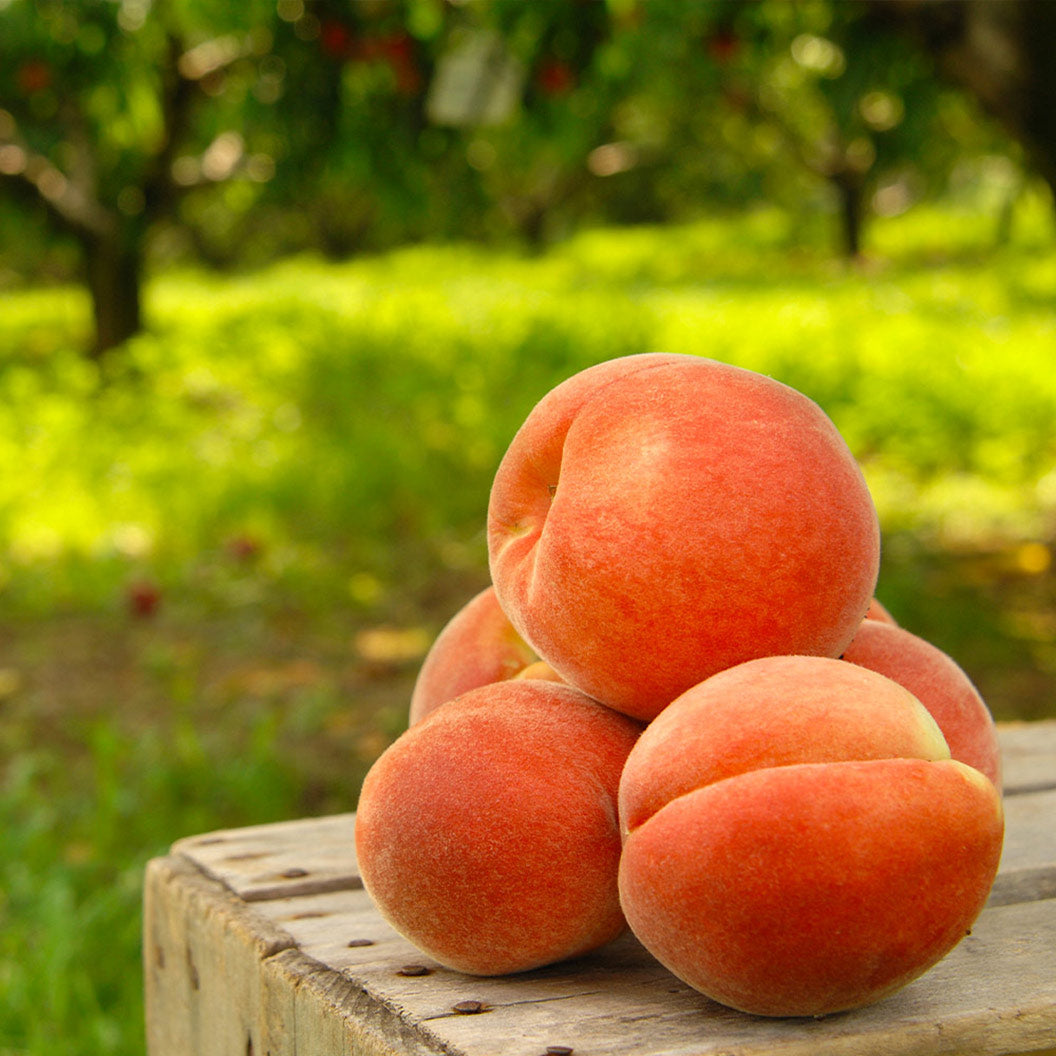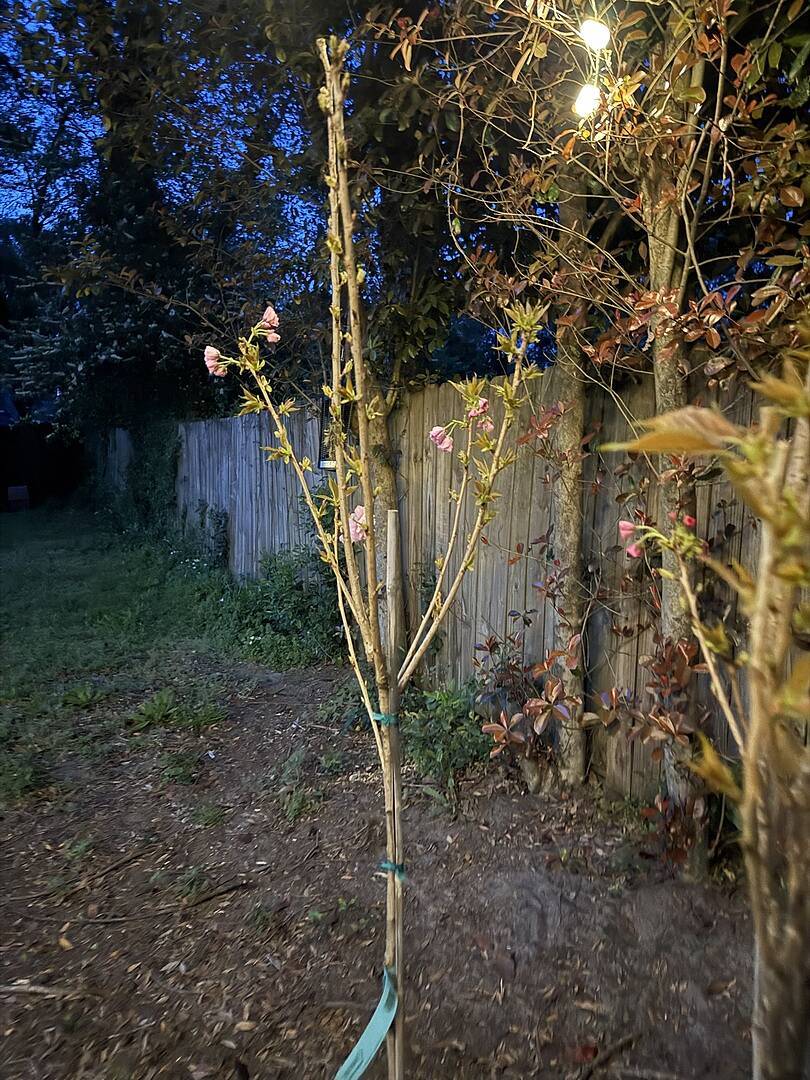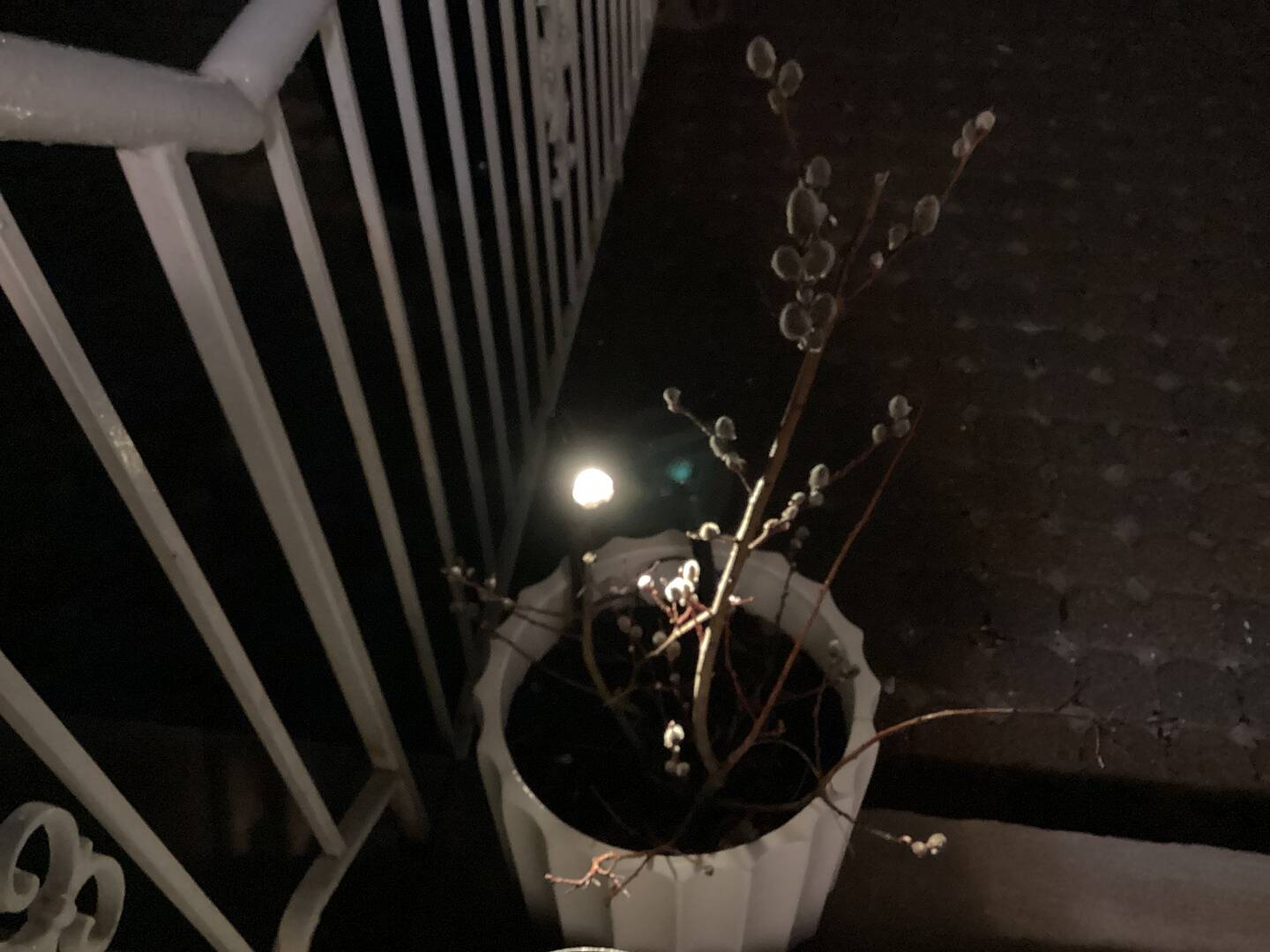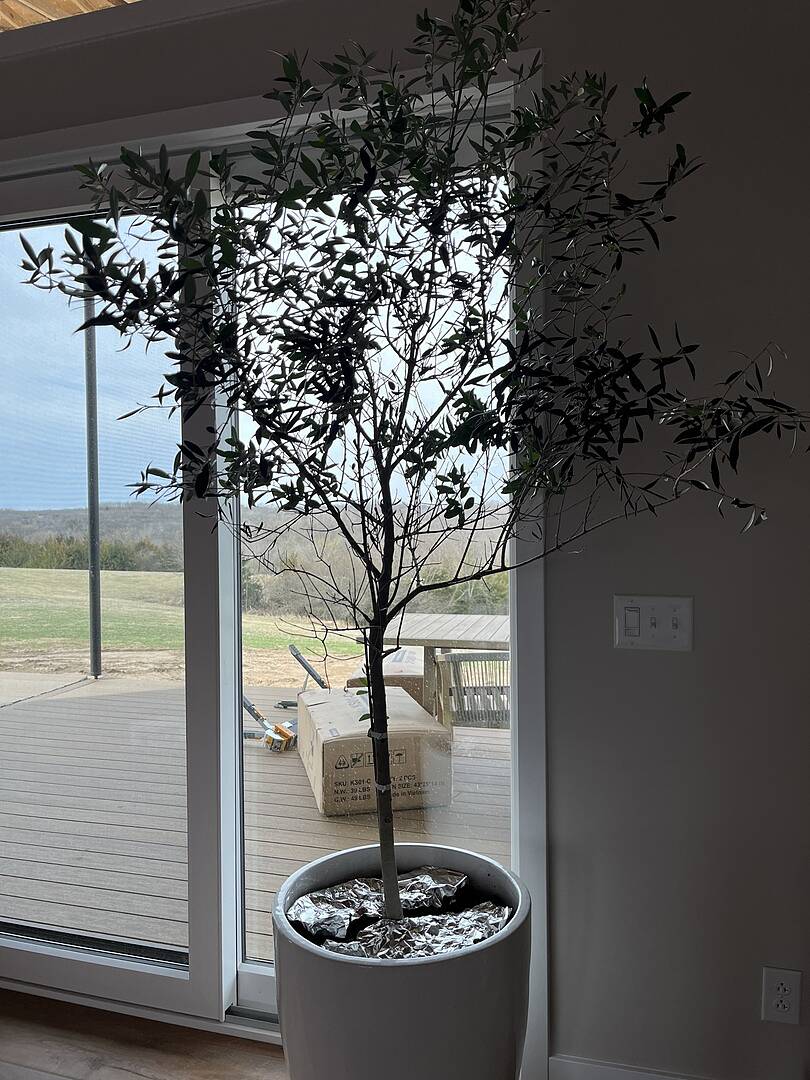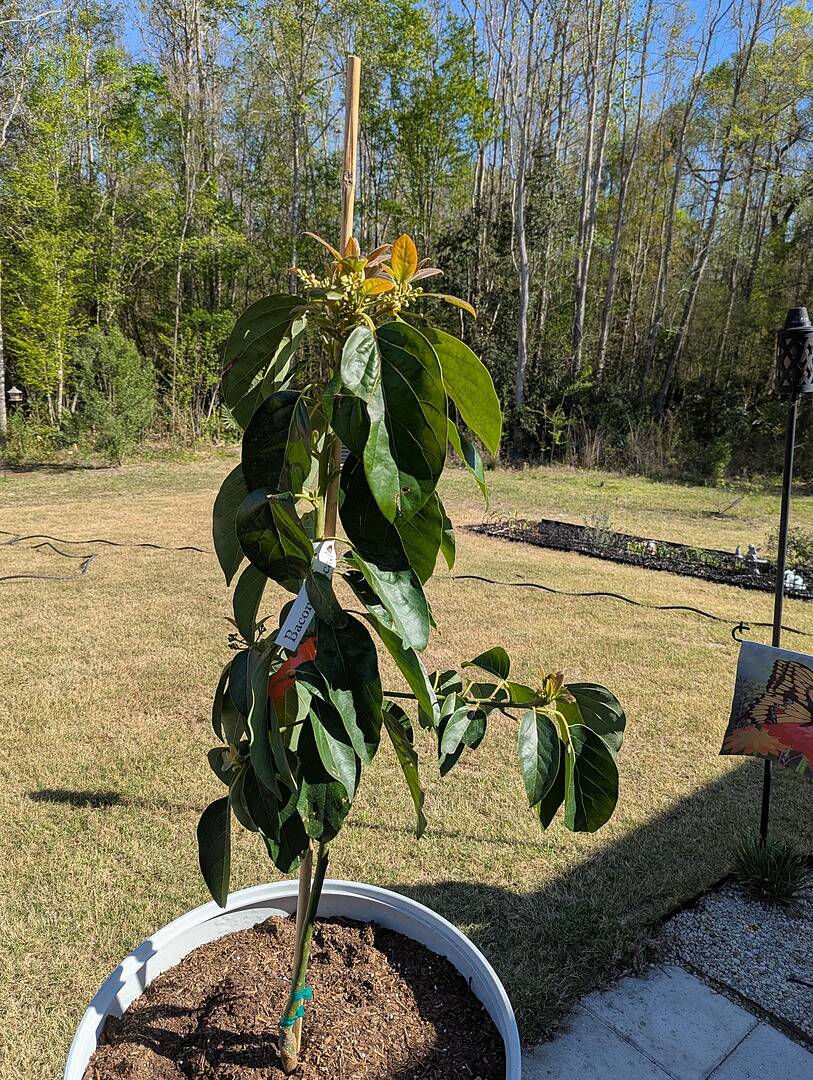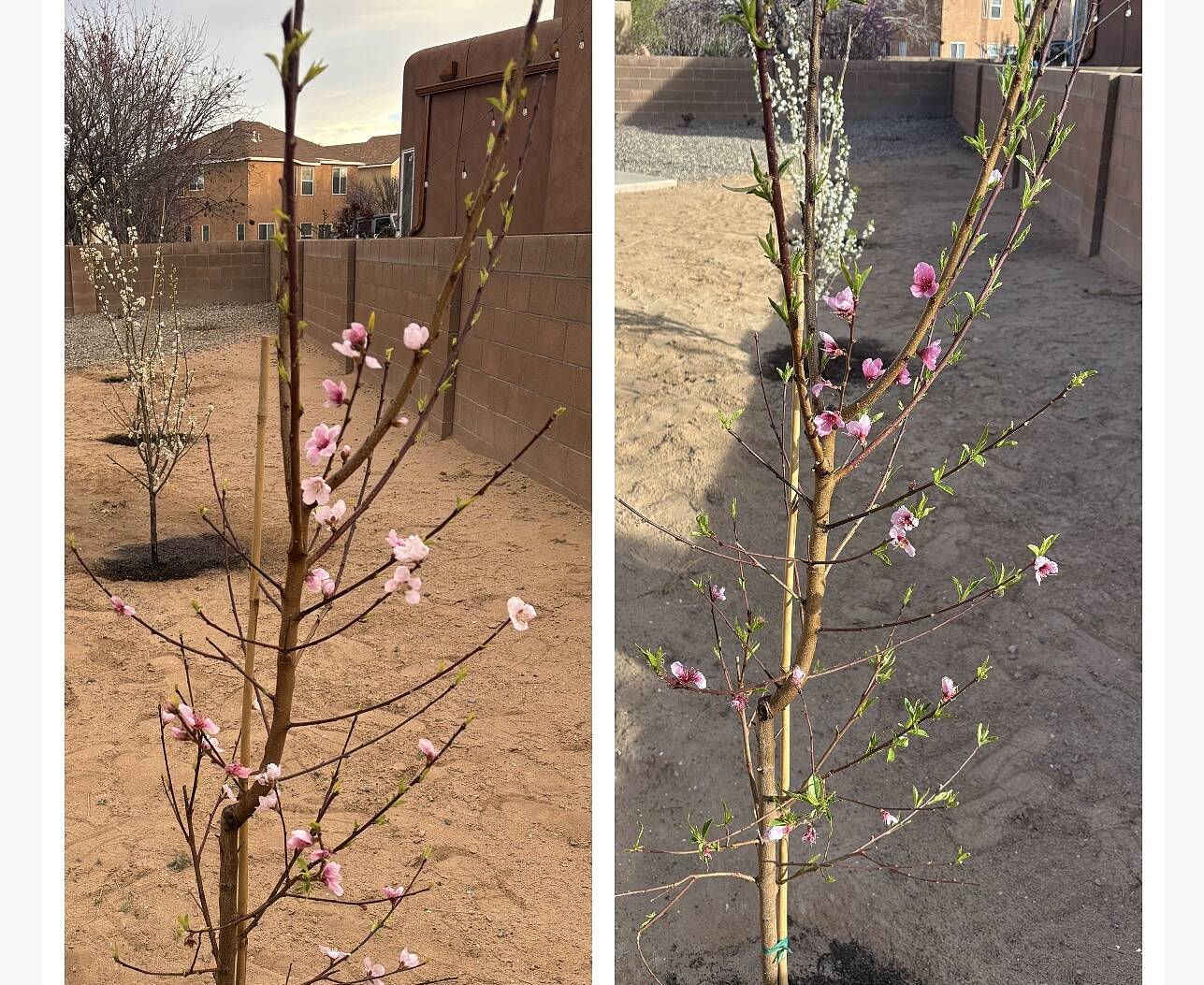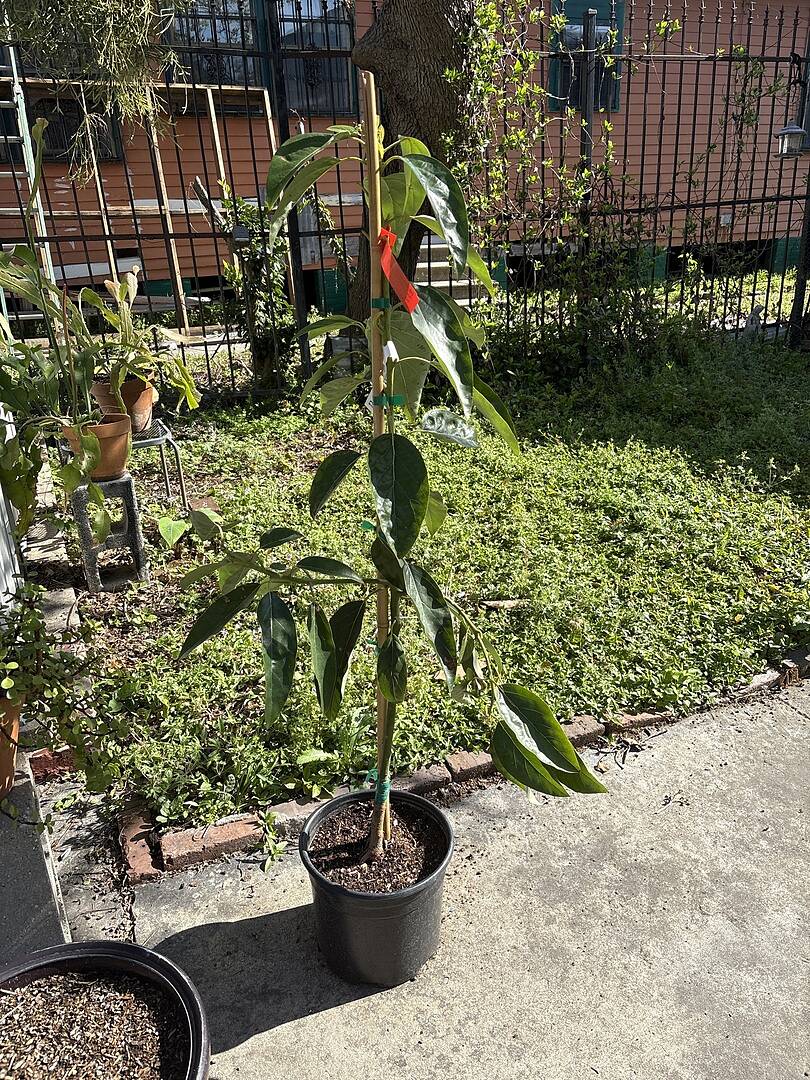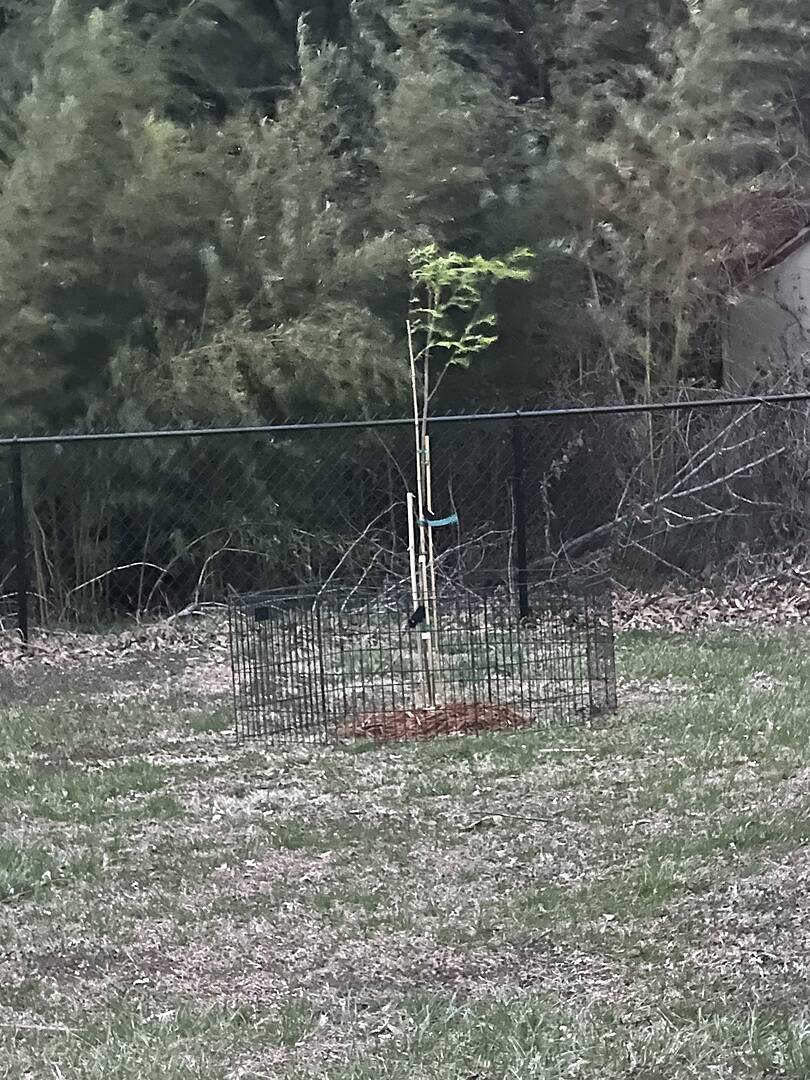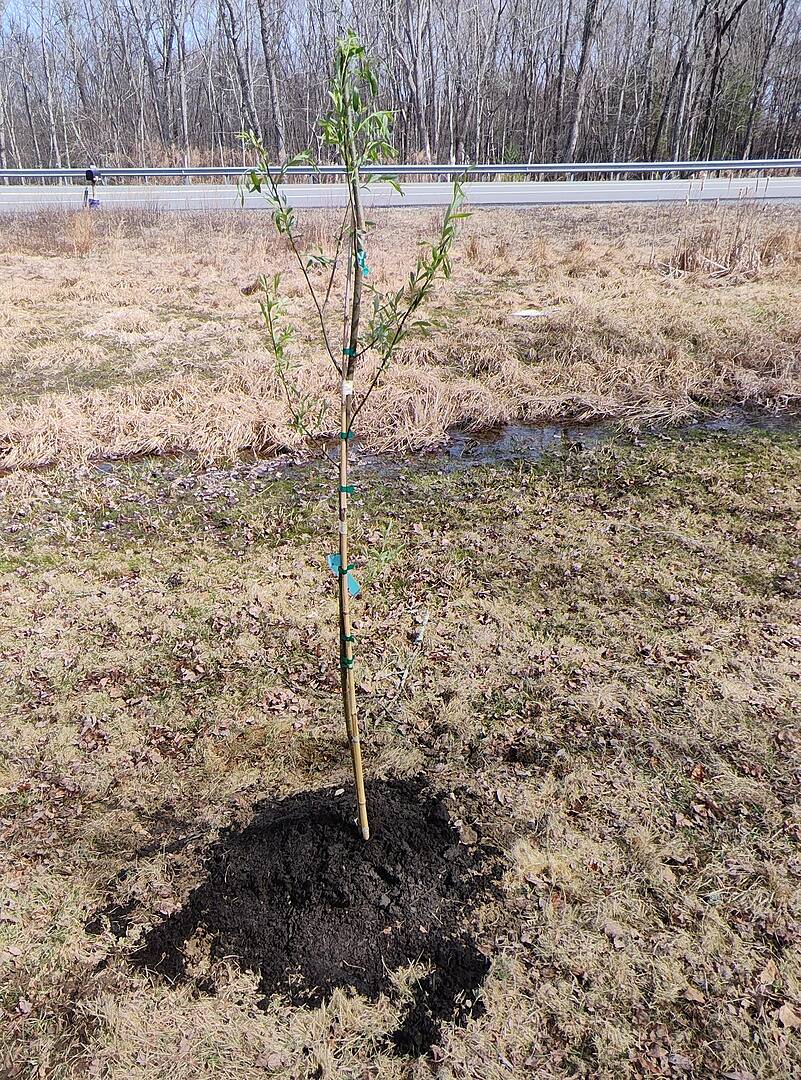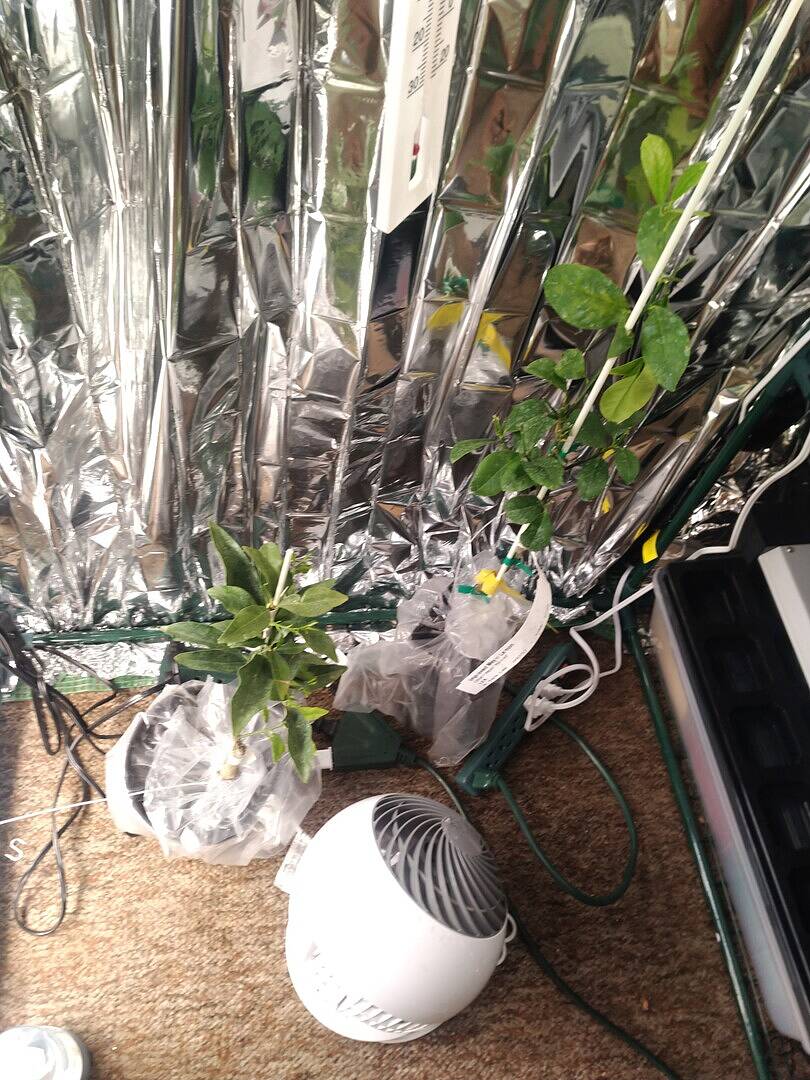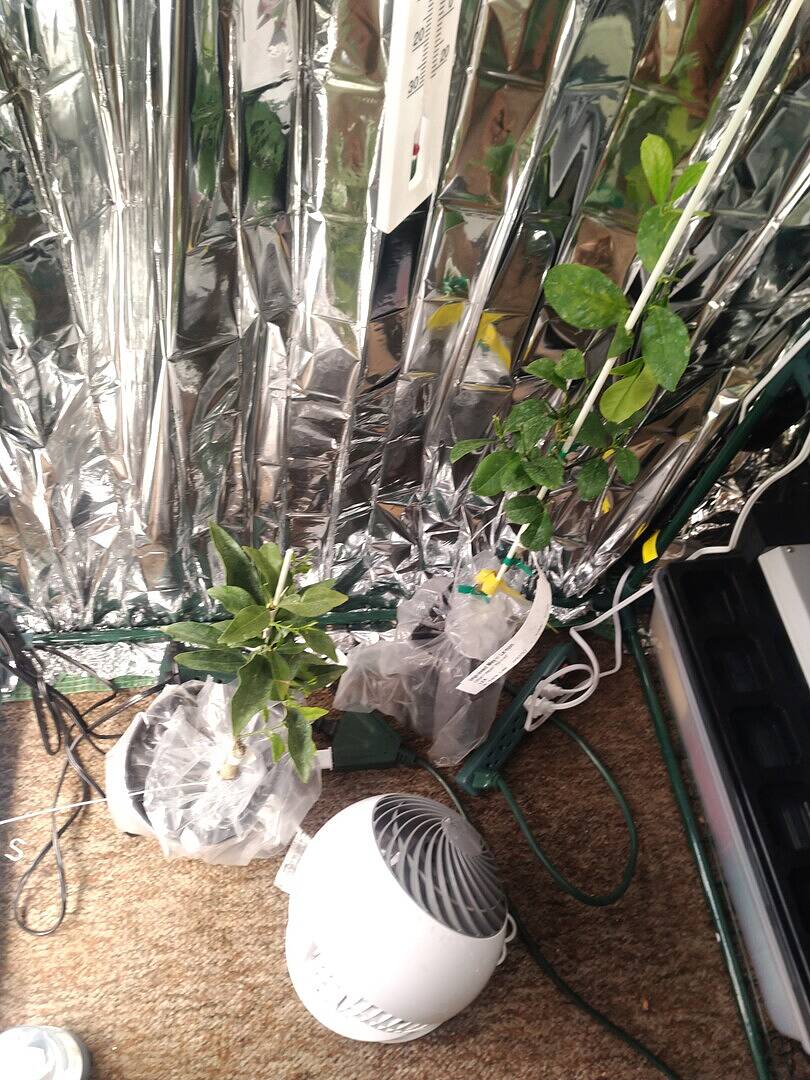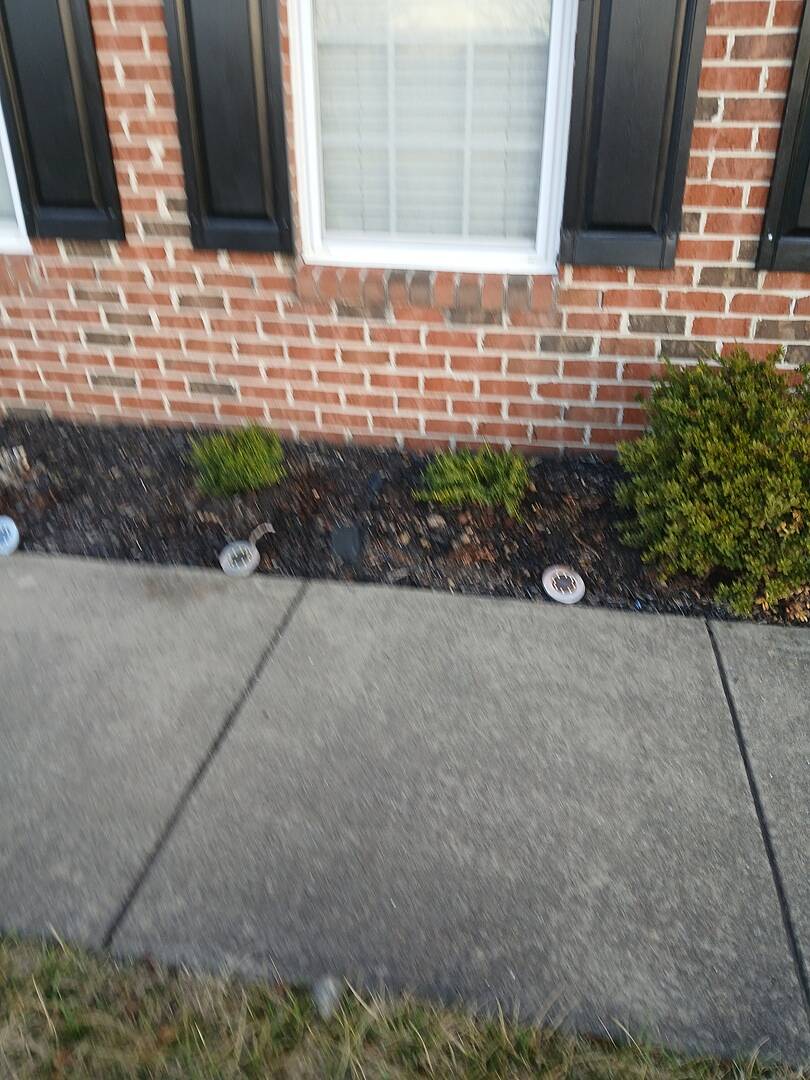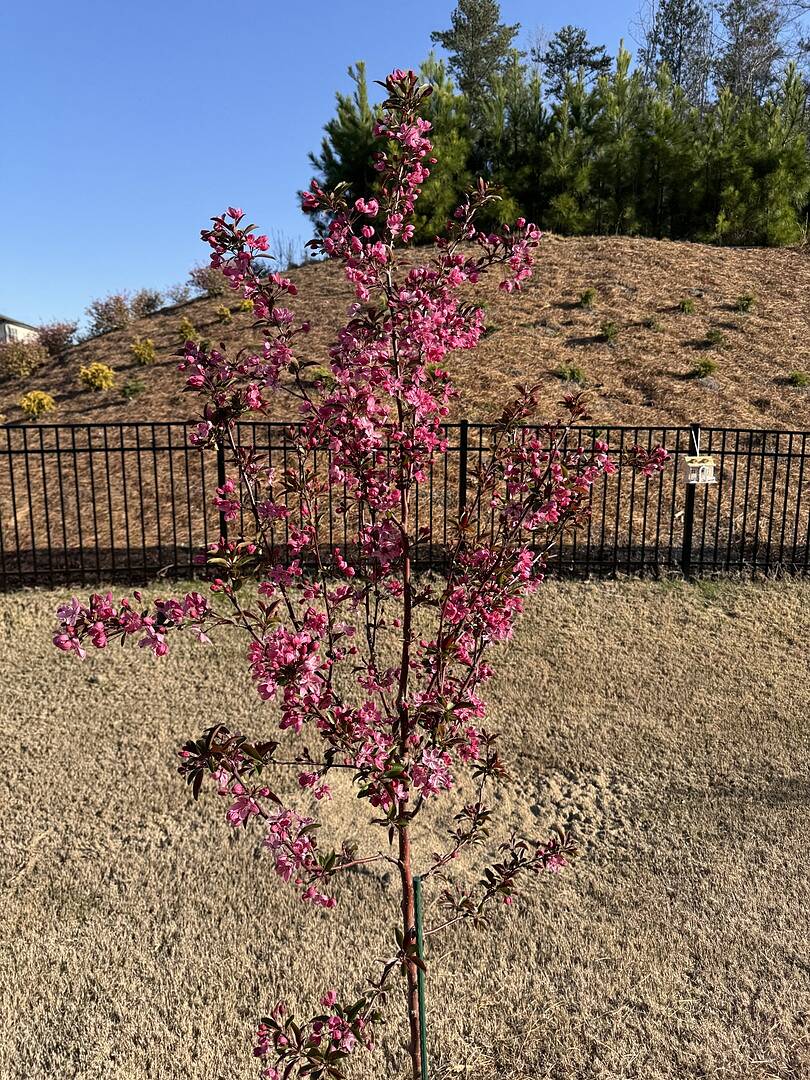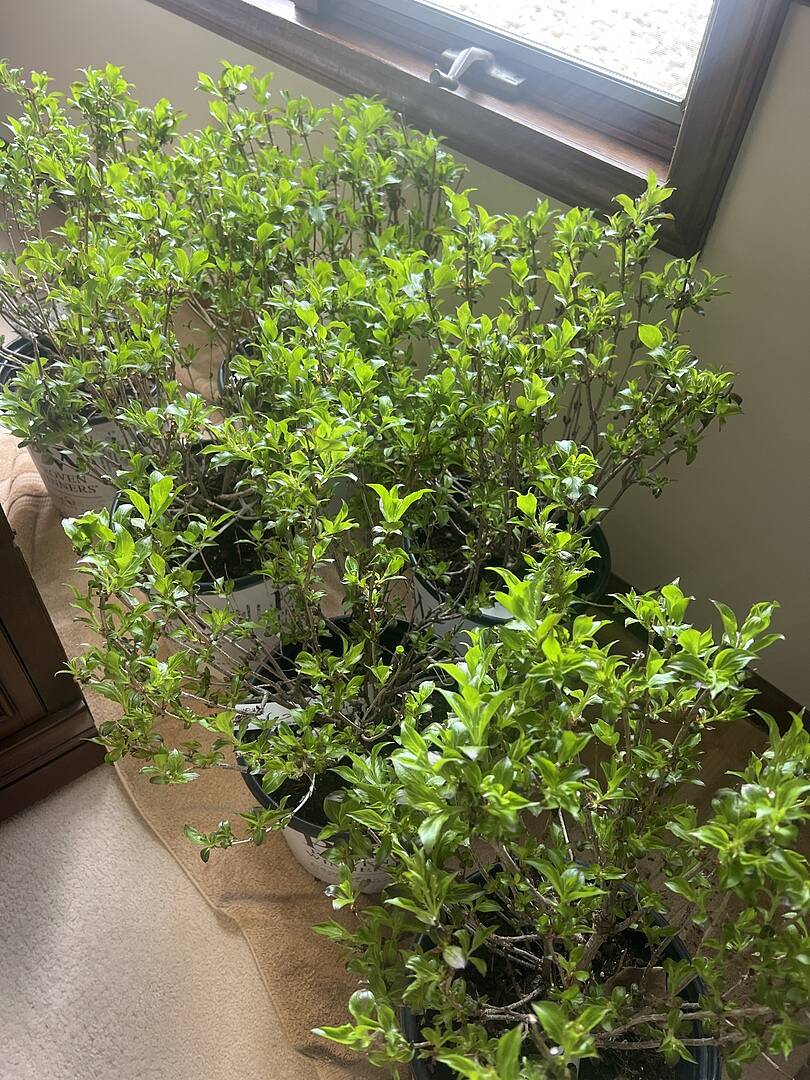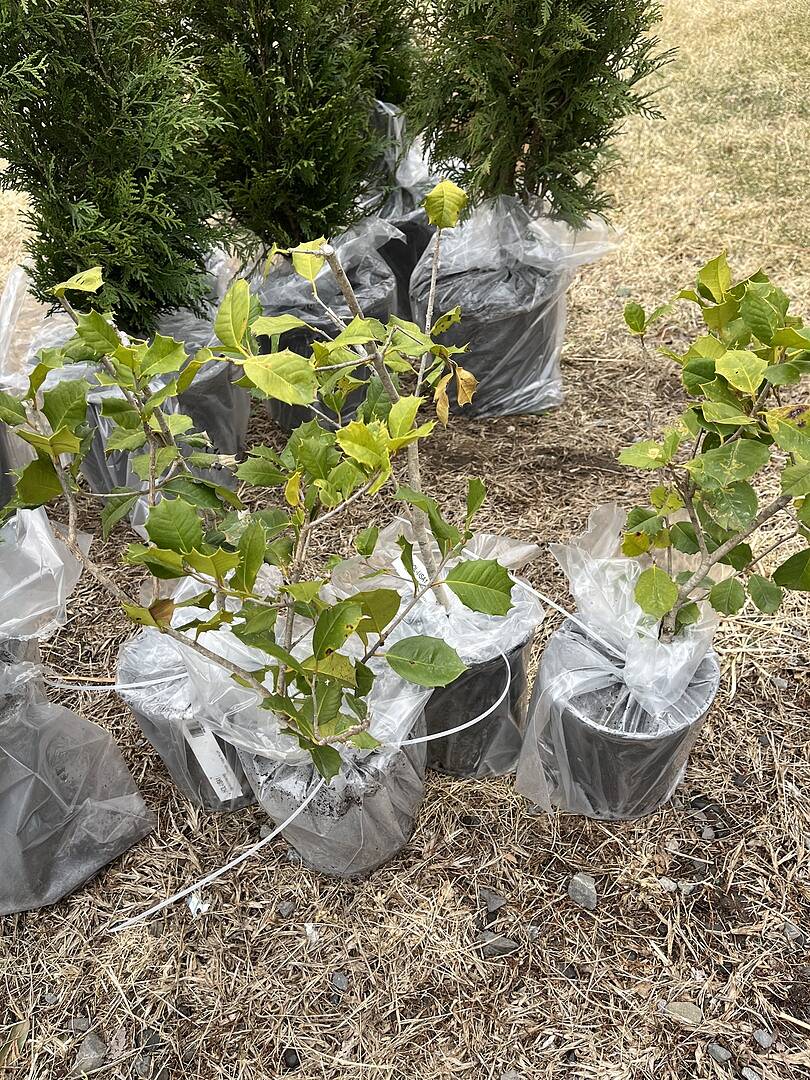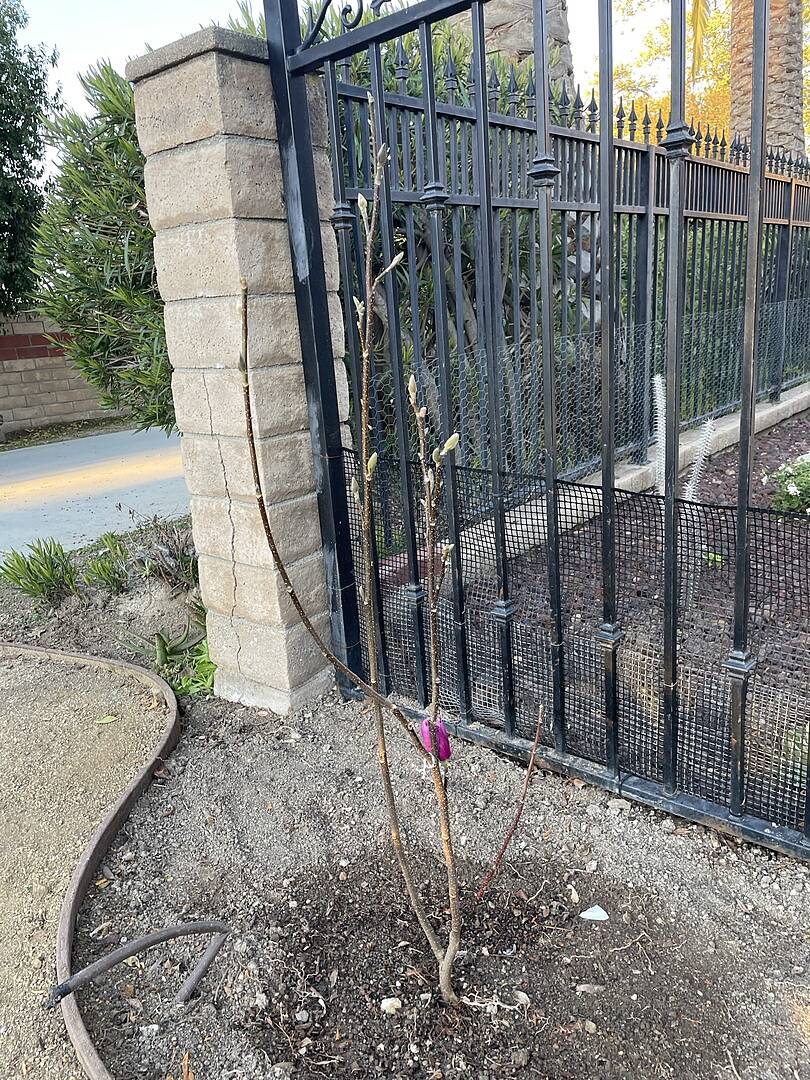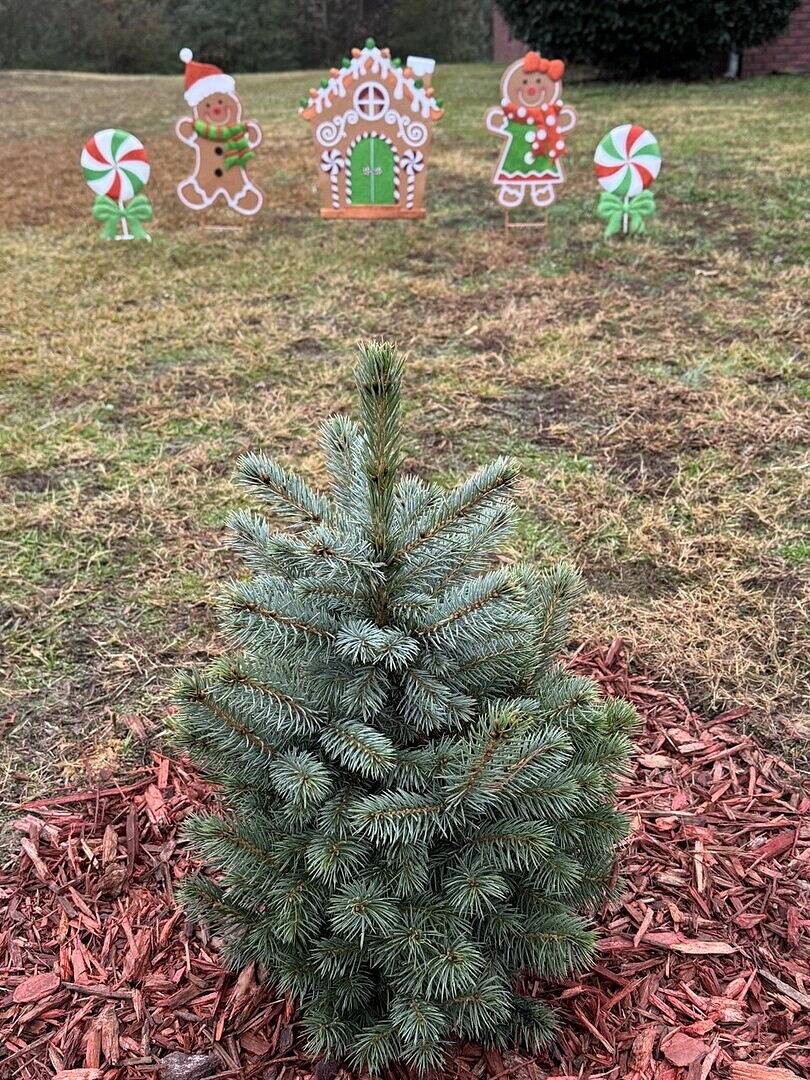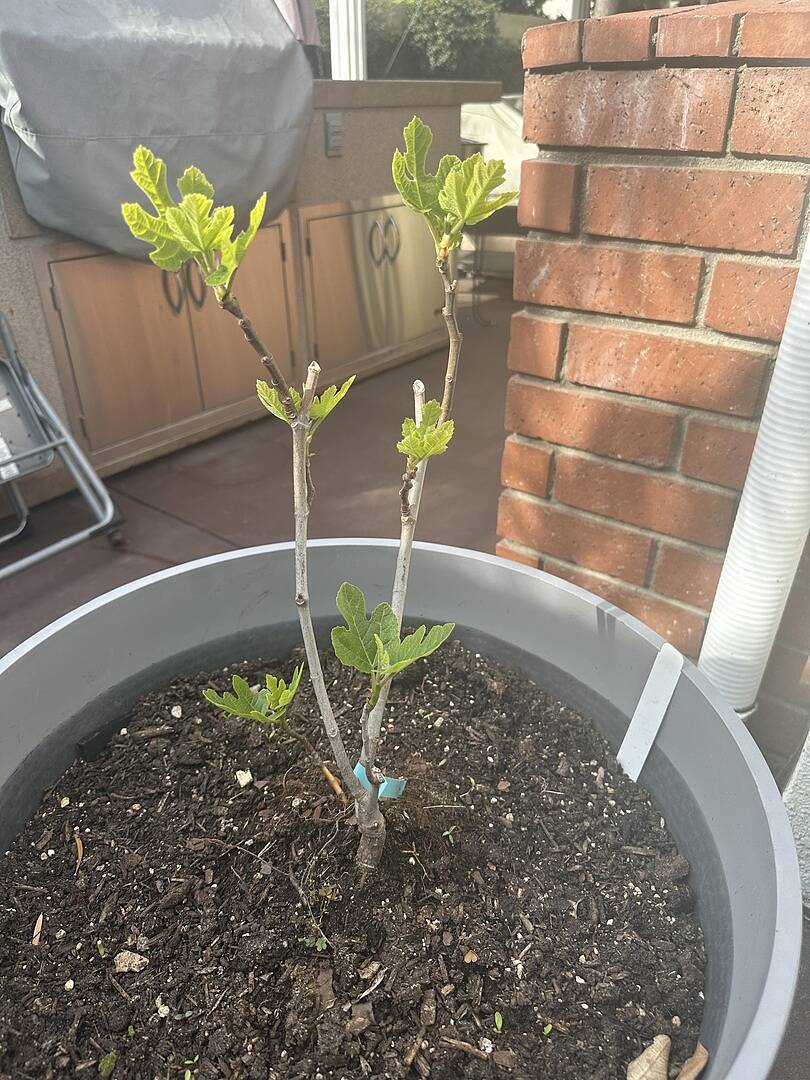The Methley Plum (Prunus salicina) is an excellent, self-fertile plum tree with a nice show of spring flowers. These trees have excellent cold tolerance growing in USDA zones 5-9 but they do require chill hours. In warmer climates ensure that you have a minimum of 250 hours between 32 and 45 degrees. They need full sun and an open environment. Methley plums will reach an overall height of 10-15 feet tall and mature width of 10-20 feet, growing at a rate of 12-18 inches per year. The Methley plum is also a great pollinator for many other types of plum trees.
Choosing a location: All plum trees need a full sun exposure location so be sure to pick a bright spot for the trees new home. Well draining, sandy soil is highly recommended with a pH range from 5.5 to 6.5 (which can be easily determined with an inexpensive soil testing kit from your local nursery/big box store). If possible, plant the tree in a South or West location to cut back on the wind which in turn will assist the tree in setting fruit.
Planting directions: Some varieties of plums will require a cross pollinator to produce fruit. Be sure to keep your trees within 20-25 feet of one another for the best pollination which will result in the best fruit yield.
1) Prepare your hole by digging it three times as wide as the root ball and just as deeply.
2) Gently comb the root ball freeing up any compacted roots and place the tree.
3) Back fill the hole partially, pressing down gently as you go along and water to settle the soil.
4) Once the hole has been completely filled, add a layer of organic mulch around the tree to help conserve water. Do not let the mulch touch the trunk of the tree as this can promote rot and fungus.
Watering: Water your tree generously weekly, twice a week for the first growing season to help promote the growth. Deep waterings encourage the roots to extend more deeply into the soil which in turn makes the tree more drought resistant. For young trees, a deep watering with a little over two gallons of water works well whereas adult trees will require around 8 gallons for each watering. If the edges of the tree’s leaves appear to be turning brown or wilting, then the tree is not receiving enough water. The bark at the base of the trunk will change from a light brown to dark brown (or black-ish) color if it’s receiving too much water.
Pruning: Give your tree a full year to get situated in its new home before attempting to prune. Young plum trees are typically pruned in the late winter to early spring seasons before buds begin to break. This will cut back on the possibility of “silver leaf disease” attacking the tree. More established plum trees will benefit from a midsummer pruning. Pruning isn’t very difficult but a necessity to “cut back” on broken limbs from heavy fruit production. Take off about 20% of the previous year’s growth with cuts at a 45 degree angle. Use a sterilized cutting tool (rubbing alcohol works perfectly) leaving the upright, vigorous branches plenty of space for light to penetrate.
Fertilizing: There are a couple of steps for proper fertilizing of your plum tree to ensure a healthy growing season. Young trees that are three years or younger will benefit from about a half cup of balanced 10-10-10 fertilizer formula applied once in around mid-April and again in early June. More established plum trees will require one annual application of the same balanced formula mid-April. Use 8 ounces for every year of the tree’s age. Fertilizer can burn the roots of younger trees so instead of taking the chance with chemicals, improve your soil’s fertility by amending compost into it.
Plum trees that are fertilized properly should grow about 1 foot to 18 inches per year. Symptoms of over fertilizing can include leaf scorching and excessive growth. If you’re noticing these issues then reduce the amount of fertilizer for the following year. Always be sure to water DEEPLY after every fertilizer application and avoid fertilizer getting too close to the trunk.
Harvesting: The best tasting plums are left on the tree to fully ripen before picking. Apply gentle pressure with your fingers to determine ripeness. Soft skin on the fruit means it’s ready to be picked. They should easily come off of the tree when ripened using a slight twist. Plums are best kept in the fridge as they unfortunately do not store for very long. If kept in the fridge, they may last a bit longer, closer to around 2-4 weeks.
*Tip: Birds can be attracted to the developing plums. Consider utilizing a “bird net” to preserve your plum fruit.









